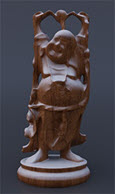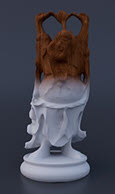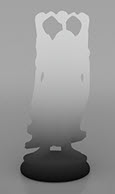Depth, Dust, and Position Procedural Masks - Arnold for Maya
 |
 |
 |
Depth, dust, and P Position
This tutorial shows how to create Z Depth, dust, and Object Position masks that can be used in a compositing package to layer shading effects such as depth of field, dirt, dust, or snow. They use a combination of Arnold shaders such as utility, range, and state float. Thanks to Slava Sych for the assistance with this tutorial.
A scene file can be found here.
Depth Mask
Create a state float shader. Set the variable parameter to ray length (Rl).
Create a range shader and connect the state float shader output to the input of the range shader. Change the following parameters of the range shader:
input min: 0.6 (this value depends on the distance from the camera your object is).
output max: 1.5 (this value depends on the distance from the camera your object is).
smoothstep: Enabled
Note that this mask directly depends on the distance from the camera.

Object Position (n) Dust Mask
Create a utility shader. Set the following parameters for the utility shader:
color mode: normal (n)
shade mode: flat
Create a range shader and connect the utility shaders output G to the input of the range shader. Enable smoothstep and control the mask position with the input min/max parameters.
If you cannot connect a single out color (Out G) to an Input in your DCC, use a rgba to float (mode G) shader to convert it.

Object Position (P) Mask
Create a utility shader. Set the following parameters for the utility shader:
color mode: shading point (P)
shade mode: flat
Create a range shader and connect the utility shaders output G to the input of the range shader. Enable smoothstep and control the mask position with the input min/max parameters.
If you cannot connect a single out color (Out G) to an Input in your DCC, use a rgba to float (mode G) shader to convert it.

